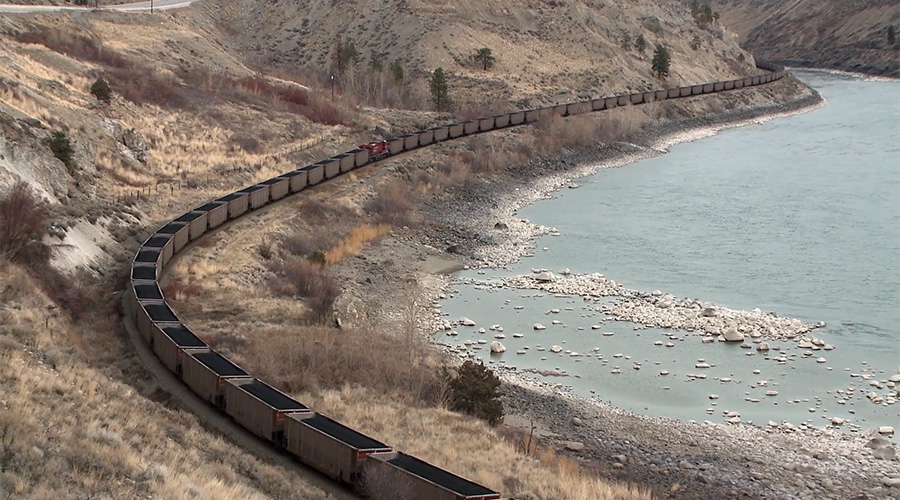TTCI updates rail grinding, tie and fastening system research
3/24/2021
By Jeff Stagl, Managing Editor
The Association of American Railroad’s 26th Annual Research Review held virtually on March 16 included updates on a number of ongoing research and development projects at the Transportation Technology Center Inc. (TTCI) in Pueblo, Colorado.
Among the dozen presentations, TTCI Senior Scientist Scott Cummings discussed rail grinding advances, and TTCI Senior Engineer Yin Gao shared progress on tie and fastening system research.
Grinding is vital to maintaining or restoring surface conditions and cross-sectional profiles, said Cummings. It can address rolling contact fatigue, help make steering more effective in curves and provide rail rollover stability.
In one ongoing case study at TTCI, four corrective grinding sites in a seven-mile range on the test track are being studied to help determine optimal rail removal while grinding. After five to 11 grinder passes on the 1980s vintage relaid rail, high-quality testing is restored.
In a second case study, low rail on a three-degree curve on the test track is under analysis. Two grinder treatments were performed in a four-month span on the 2006 vintage non-premium rail.
Through the case studies and data from 88 rail exception sites, TTCI has found highly variable grinding depths, said Cummings. The overall grind depth/outcome success rate has been 77% after one to 17 grinder passes, he said. However, the studies have generated a 100% success rate for grinds at or less than 0.060 inches.
TTCI also is performing a low-rail template analysis that focuses on train performance with a hollow worn wheel. The study involves steering and resistance to rollovers.
Eight different high- and low-rail grinding templates were overlaid on typical grinding templates, said Cummings. The study — which involves the analysis of 600 worn wheelsets — has found field side relief is more important than the crown radius when grinding.
During his presentation, Gao reviewed efforts to better understand tie and fastener system failure mechanisms, and to improve the performance of ties and fastener systems.
 Credit: TTCI
Credit: TTCIA concrete tie life extension study has been ongoing since 2019 and has registered 268 million gross ton-miles (MGTs) so far on the test section, said Gao. The ties — including most repaired ties — are performing well, but those with center cracking that have been repaired are sometimes failing because the epoxy used didn’t prevent new cracks, he said.
Overall, the degraded concrete ties are still holding up well in the test track after the 268 MGTs.
Meanwhile, a wood-tie fastening system study underway since 2017 has logged 496 MGTs since 2020’s end, said Gao. About 6.5% of the 800 ties under analysis on the test track had broken cut spikes and 5.1% had broken drive/screw spikes.
A new test zone involving a 150-tie section with curve block plates on every third tie has registered 45 MGTs so far and is showing promise, said Gao.
TTCI also is analyzing engineered polymer composite (EPC) ties via fatigue tests to identify any internal defects. A nine-tie section has undergone 220 MGTs of testing, or 1.5 million fatigue cycles.
The most common type of composite ties, EPC ties are produced from recycled plastic and include additives, fillers and fiber or particle reinforcements.
A center cracking fatigue test can identify EPC ties with internal defects, said Gao. A rail seat fatigue test is still under development, he added.


